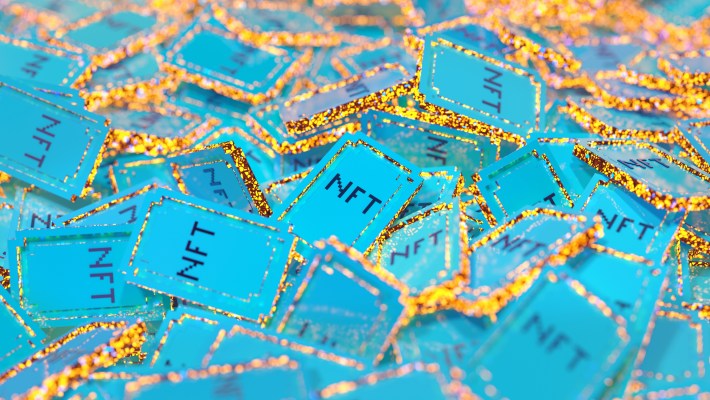NFTs have suffered everything from ridicule and scams to a broad dip in demand due to the crypto winter. Sometimes it almost feels like some of the projects in the space are kept going simply on hopes and dreams. Still, the sector has persisted through the downturn, and recent momentum in crypto has investors, community members and spectators alike becoming interested in NFTs again.
Sure, NFTs get a lot of heat for all the silly apes, rocks and JPEGs that people spend millions on, but there’s a widespread belief in the industry that there’s ample value underlying the concept and the various use cases it brings.
“I think NFTs are just cultural artifacts of crypto at this point. When people have fun, it’s easier with a JPEG than just a token,” Ilja Moisejevs, co-founder and CEO of NFT marketplace Tensor, told TechCrunch+.
Most people are holding on to their NFTs regardless of their monetary value, according to Yat Siu, co-founder and executive chairman of Animoca Brands. Making money from NFTs validates their holders’ conviction, but Siu thinks there are more important factors driving the persistent ownership.
Similar to the reason people buy diamonds, there’s a sense of value in investing in NFTs because it makes users look good or enhances their social standing, Siu said.
“Some are basically just fraternity clubs; just people having fun with similar interests,” Moisejevs said. “It’s not a crazy idea, but NFTs make [the experience] more powerful by bonding them together. You either lose money together or make money together.”
And it seems there are more people jumping to be a part of the “make money together” group: In the past 30 days, there have been about 120,000 more NFT buyers than sellers, and sales volumes have increased 72.7% to about $1.66 billion, according to NFT aggregator CryptoSlam.
Mad Lads, a Solana-based project, at first glance seems like a collection of anime-style drawings of men and women, but dig deeper and you’ll find the project is trying to build greater value for its holders with its own newsletter, integrations with other networks, and the parent company, Backpack, launching a crypto exchange.
Other projects like Bored Ape Yacht Club (BAYC), are trying to do something similar as well, even amid shaky times. At its peak two years ago, a BAYC NFT was sold for about $2.9 million. Today, BAYC total sales are down 46%, to $22.47 million over the past 30 days, and one of its NFTs recently sold for about $89,000. The project’s heyday seems firmly in the past, but its community members are still holding on to their JPEGs.
But it’s always a gamble — some projects could be sinking ships, while others are just in a low period waiting to propel up. It’s something that can happen in any sector or industry. There’s no denying the financial incentives in play here, but rarely do you see such firm enthusiasm from the people involved in an online community or project as you do with NFTs.
According to Richard Wu, co-founder of Tensor, community and culture are the main elements separating NFTs from other ways of trading, like memecoins and fungible tokens. “NFTs found product-market fit with a community of people around one idea, one narrative,” he pointed out.
“If you think about network effects, capitalism is the fact that you can make money from it. That won’t stop, but the initial wave of people in this space were looking for those opportunities,” Siu said. “We shouldn’t be too surprised that anything in the early days of web3 had a strong financial angle. Like, if you made a game for Wall Street, what do you think it would look like in a starting scenario?”
Siu recounted how, at Taipei Blockchain Week recently, most people he spoke to said they entered the web3 world because of NFTs. Those recent entrants differ from those who have been in crypto for years and have a different view of the space, he added. “Their thinking is different. It’s a natural evolution.”
“Ownership is what makes NFTs, NFTs,” Moisejevs said. “PFPs (profile pictures) were a proof of concept. It’s a new way to manifest and transfer ownership.”
Tensor launched its own NFT collection, Tensorians, earlier this year for “die hard holders” who support its marketplace, Wu said. “It’s our biggest advantage when it comes to building a really great NFT experience.”
In an effort to support the community, Tensor plans to organize exclusive events for Tensorian NFT holders, like a contest, working with a decentralized application that allows them to participate and win prizes, or other ventures. This is something that has transpired across the NFT space with teams behind big and small projects alike wanting to give back and grow their collections.
“The most expensive NFTs didn’t start with expensive mints, but what they did do was make you work for it,” Siu said. “If you want to build a community from the ground up, you need to make them get to a certain level to get an NFT.”
That sort of thinking has led communities to become promoters and supporters of the space, and build alongside the team behind the project, Siu added.
It may also help that NFT projects can experiment with their communities and brand in a number of different ways, like using profile picture JPEGs, inscriptions, or gaming skins. “There’s a lot more dimensionality than just a ticker and a price,” Wu said.
The depth of an NFT project’s culture is the depth of its economy, Siu added. “Even when you buy designer clothing, you don’t buy it to flip it tomorrow. The vast majority of people buy it to be a member of a community.”
And it seems the same goes for NFTs: You buy a stake in a community and that stake also serves as a status symbol. But it’s anybody’s guess whether that status, or the value of the stake, will last for a long time.
